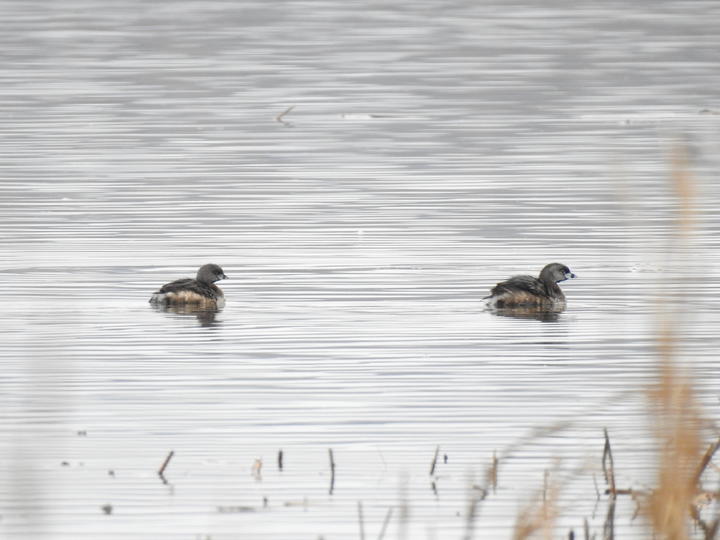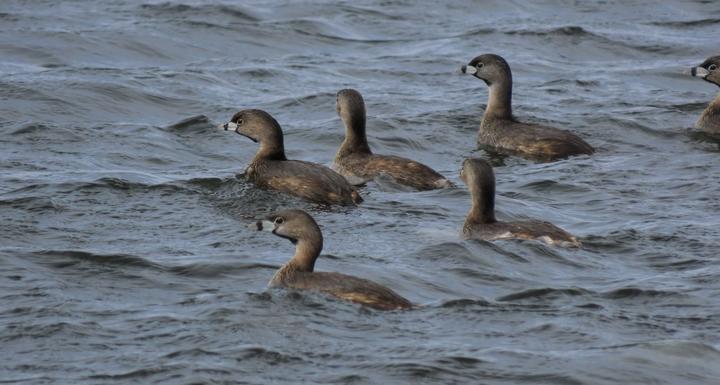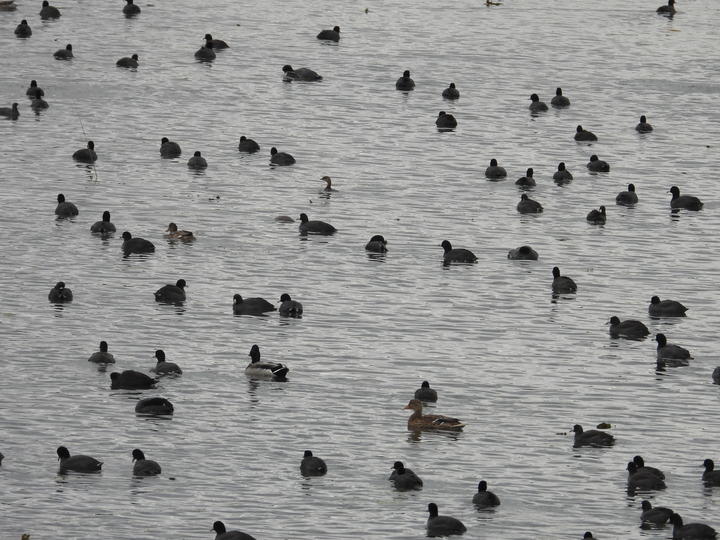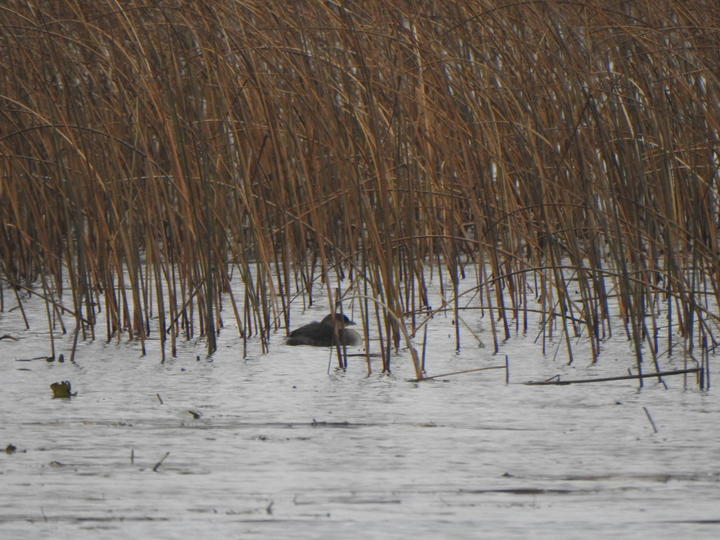More names for this bird
Anishinaabemowin: Zhingibis (grebe)
The Dakota and Anishinaabe were among the earliest people to name Minnesota’s plants and animals, as well as to understand them in relation to Minnesota’s climate and seasons. Those original names are still in use, and several are included on the Season Watch website. However, complete translations were not available.
Latin (or scientific name): Podilymbus podiceps
The scientific community has a convention of assigning agreed-upon Latin names to every kind of organism. Using scientific names helps people communicate confidently about the same organism and organize lifeforms based on how closely related they are.
Spanish: Zampullín Picogrueso
French: Grèbe à bec bigarré
Page contents
About the pied-billed grebe
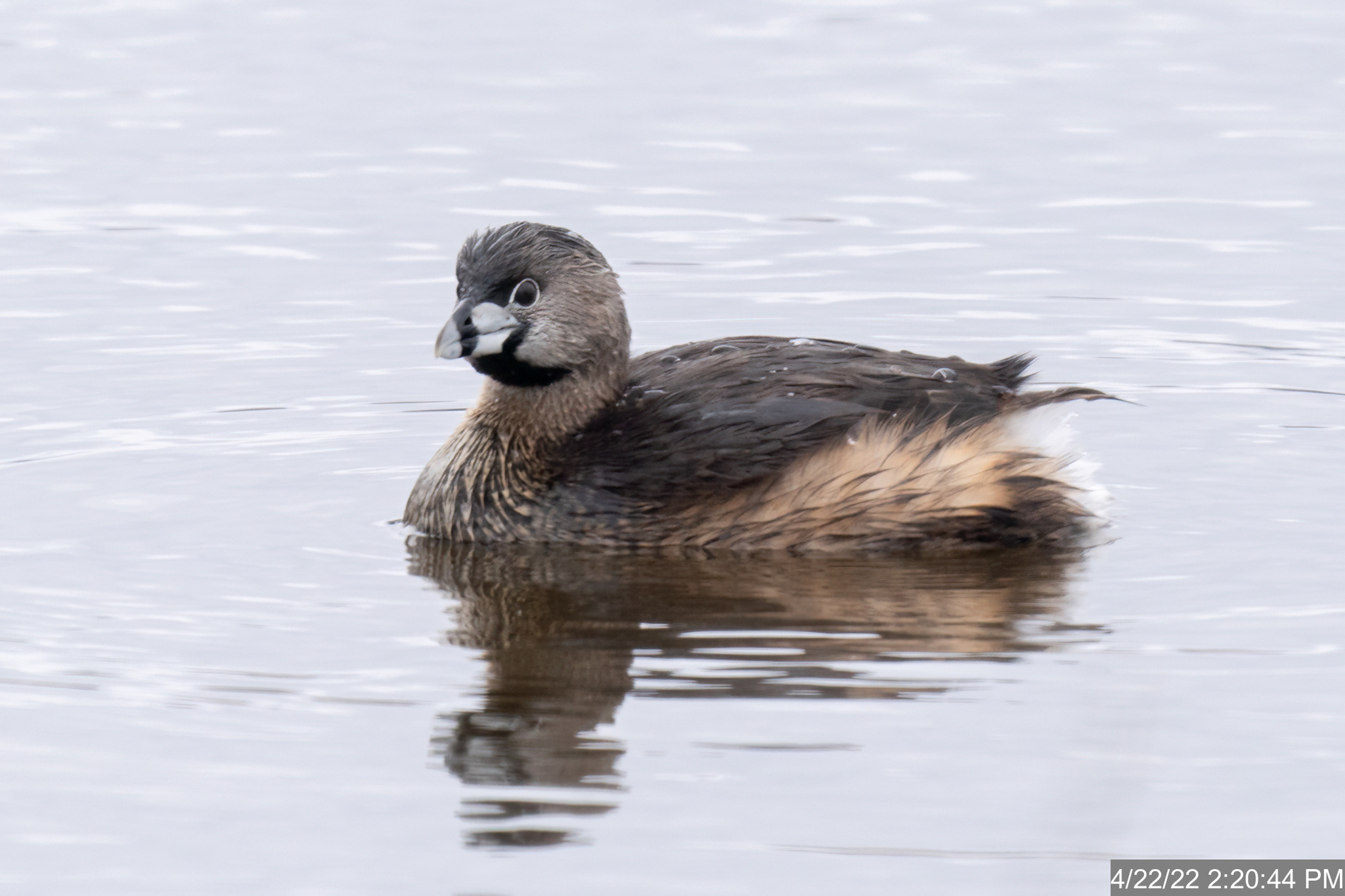
April 22, 2022, Goodhue County, Minnesota
Photo © cebye, some rights reserved (CC-BY-NC)
iNaturalist observation
About the pied-billed grebe
- The pied-billed grebe is a small, brown waterfowl that eats mainly eat small fish, amphibians, and aquatic invertebrates.
- Their name describes the black band around a light-colored bill. This fieldmark is often easy-to-see from a distance and is distinct from other birds in the region.
- These birds create their nests on the water where they lay three to ten white eggs that incubate for twenty-three days.
- When they leave their nest, generally within a day of hatching, young pied-billed grebes are black-and-white-striped.
- Fun fact: Unlike many birds, male and female pied-billed grebes have the same coloring.
- Pied-billed grebes migrate. Expand the "Migration animation" section below to learn more.
Migration animation
Migration animation
Click the full-frame icon (lower right corner of video) to play at full size.
More about eBird's abundance animations
eBird data from 2006-2020. Estimated for 2020. Fink, D., T. Auer, A. Johnston, M. Strimas-Mackey, O. Robinson, S. Ligocki, W. Hochachka, L. Jaromczyk, C. Wood, I. Davies, M. Iliff, L. Seitz. 2021. eBird Status and Trends, Data Version: 2020; Released: 2021. Cornell Lab of Ornithology, Ithaca, New York. https://doi.org/10.2173/ebirdst.2020
Visual guide to phenology
Watch for changes in pied-billed grebes' presence (or absence), abundance, and behaviors at different times of year. Also, pay attention to when young-of-year appear and develop.
Note to observers
This page explains general clues to watch for when observing pied-billed grebe phenology. However, this page does not explain how to identify this bird or collect data in a standardized way.
- For help with identification, see The Cornell Lab's All About Birds.
- For guidance on collecting data, see Nature’s Notebook.
Graphs and historical data
Note: The Orientation Center provides a map, as well as information on reading graphs; interpreting summary statistics, who collected the data and how; and how to download datasets for independent exploration.
Arrival
- Earliest: March 2 (occurred in 2000)
- Average: March 27
- Latest: April 4 and 5 (occurred in 1984 and 1993)
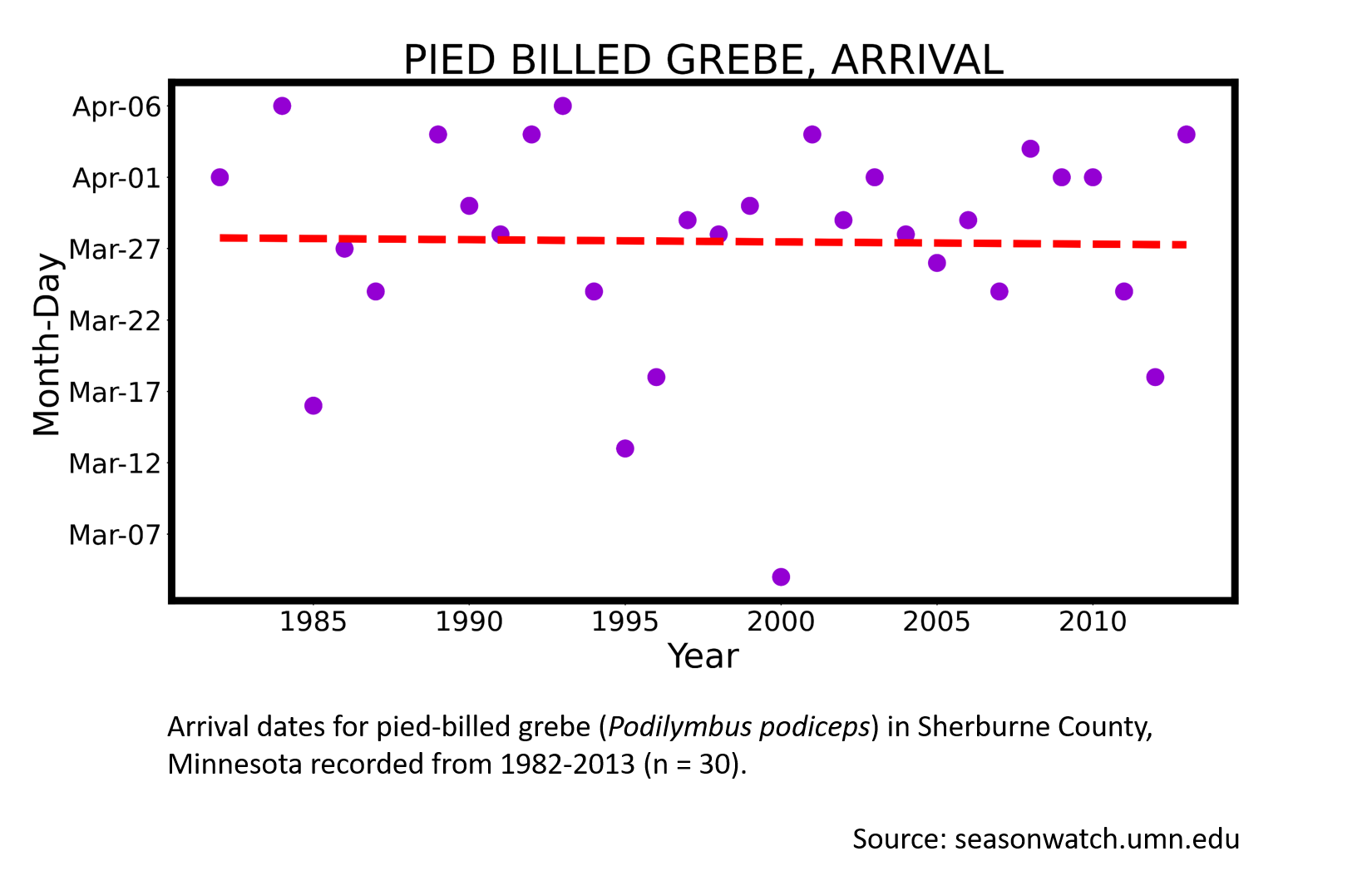
Keep exploring Season Watch
Keep exploring Season Watch
Co-author: Lynsey Nass, Minnesota Master Naturalist
